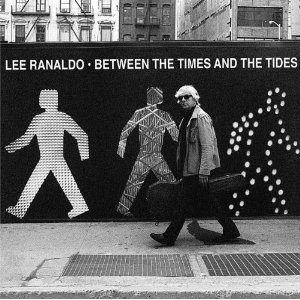There’s a sticker on the front of this CD proclaiming it to be "Lee Ranaldo’s first rock record!" Matador seem at pains to distinguish it from Ranaldo’s existing solo back catalogue of more experimental and esoteric releases; hoping, I guess, to seduce casual Sonic Youth fans- who maybe never bothered with any of the SYR off-piste releases, but checked out Thurston’s last LP after reading a good review in Uncut– by reassuring them that it really is quite listenable and, even though they may never have bought any of his other weird, limited edition LPs, it doesn’t matter and you don’t need any of them because, really, this is his first proper album.
And, as it turns out, they’re quite right and justified to do so. This is a rock record; probably the most mainstream and commercial thing that Ranaldo’s put his name to, and that includes Sonic Youth’s grunge bandwagon-riding, Geffen-era albums like Goo and Dirty. More than anything else, what this sounds like is a more adventurous, experimental REM album; tinged with jazz, folk and psychedelia, but for those still mourning the demise of the Stipe-Buck-Berry team, still a far better REM-type album than the one you would likely have got had the dream trio stayed together.
‘Waiting on a Dream’ sets the tone; a solid, mid-paced rocker- verse, chorus, middle eight- but played with Ranaldo’s trademark detuned guitar sound, all droning, raga-like clashes and resonances in an edgy minor key. Backwards guitar effects and lyrics like "I know the secrets that you dream / you’re upside down and painted green" lend an almost cod-psychedelic feel to proceedings, but Ranaldo’s too much of a grizzled old beatnik to let things slip into pastiche, and any paisley wallpaper is subsumed in existential monochrome while the lyrics, on the whole, stay determinedly at street level.
‘Xtina as I knew Her’ is a highlight; Steve Shelley’s slow, rolling drums beneath Ranaldo’s detuned guitar atmospherics inviting inevitable comparisons to Sonic Youth. The loose, narcotic-dream feel, impressionist diary-entry lyrics and palpable sense of yearning are certainly common qualities to Ranaldo’s best SY work, but this is way more of a ‘classic rock’ take, more akin perhaps to the to the Patti Smith Group in balancing the demands of the art house and the arena. John Medeski, of Medeski, Martin and Wood, comes to the fore on ‘Angles,’ his swirling, free jazz keyboard playing bringing another dimension to what’s otherwise a very early-90s sounding alt-rocker, raising it in fact to the kind of jazz-rock-world music fusion that the Byrds attempted on ‘Eight miles High’.
The ongoing feeling that you’re listening to a superior REM album is partly down to these nods towards the minor-key psych-rock of sixties bands like the Byrds, but partly just down to the accidentally similar timbre of Ranaldo’s voice to Michael Stipe’s. ‘Hammer Blows’ is a solo acoustic ballad that sounds like Michael Stipe singing Bert Jansch- albeit with a Julian Cope style wah mouth solo- but after a few listens the comparisons fall away, and it just seems like a timeless classic. ‘Fire Island (Phases)’ really explores the Blue Oyster Cult side of Sonic Youth, epic and yearning, before a country-rocking, slide guitar led chorus, and a fiery instrumental break in which Ranaldo and Nels Cline duel guitars like Neil Young and Frank Sampredo in any given Crazy Horse wig-out. Then the ‘coda’ section, which is almost as long as the main song, features some lovely, laid-back jazz flickerings…. If nothing else, this album is a guitar fetishist’s dream, and sounds like it was a joy to make, too.
‘Lost’ is a catchy fusion of jazz-rock and jangle-pop, with a structural similarity to the Youth’s classic ‘Teenage Riot’, and ‘Shouts’ takes as its inspiration the iconic ‘Riot Kiss’ photo from the Vancouver riots of 2011, a yearning country-rock ballad intercut with edgier passages of marching drum, field recordings and spoken word reportage, recreating the uneasy fusion of love and chaos the picture captures.
While it may be traditional in structure, Between the Times and the Tides is innovative and inimitable in actual performance. The playing may draw on jazz, country, rock and Ranaldo’s own avant-garde catalogue, but the choices made at any given point, the interpretation, are anything but predictable. The result is a thrilling fusion of form and freedom, indebted equally to Glen Campbell and Glenn Branca – and all the better for it.


